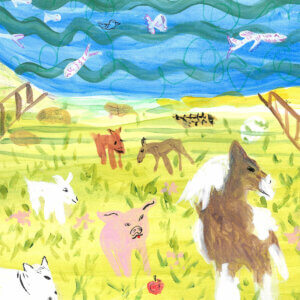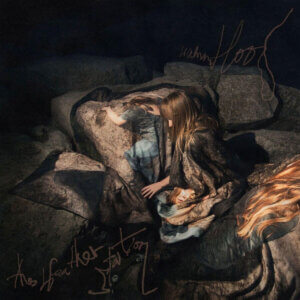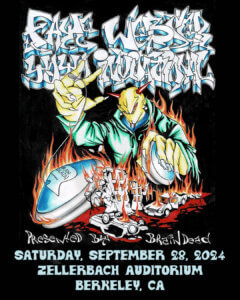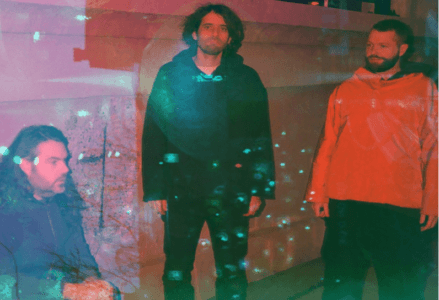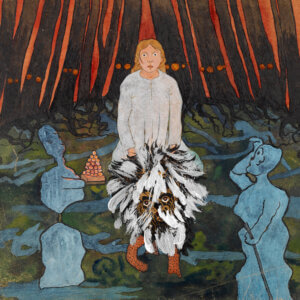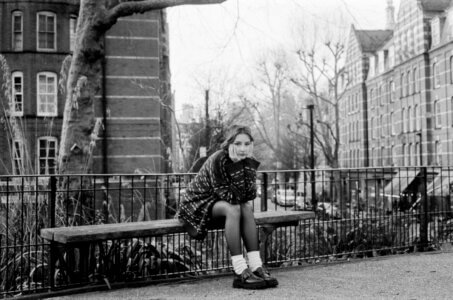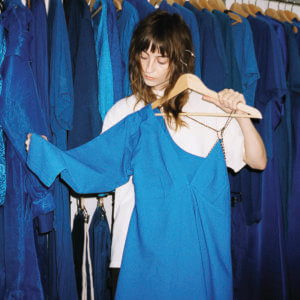Suuns Let Loose
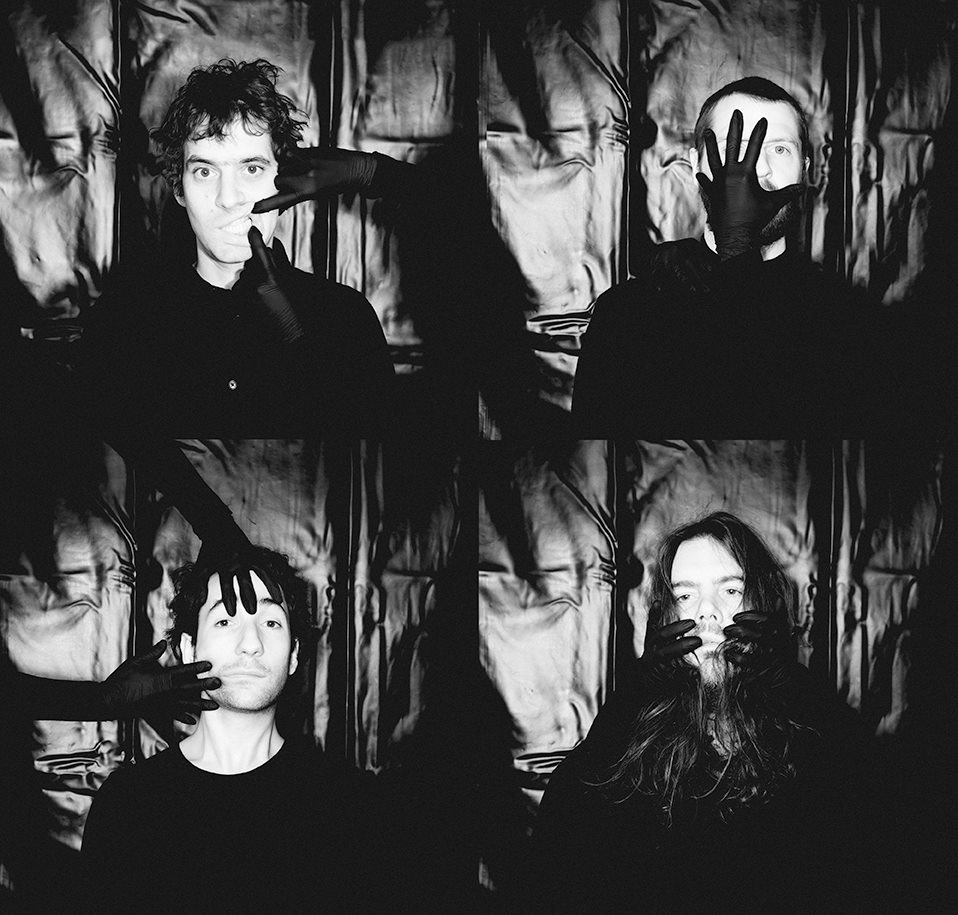
Montreal’s music scene isn’t known simply for being a fertile hotbed for emerging artists, but also for how most of its offspring have stuck around close to home. Since the 2010 release of their debut album Zeroes Qc, art rockers Suuns have become renowned well beyond the 514 (while remaining based there) with both their strong catalogue and mesmerizing live performances – to the tune of millions of Spotify streams, bookings at major festivals around the world, and songs being heard in movies like Only God Forgives and Ant-Man. With their fourth studio album Felt set to be released March 1, the quartet’s sound palette is still varied and moody in large doses, but the mood is a bit more freewheeling this time around. We caught up with frontman Ben Shemie to discuss how that tone showed itself on the project, why Montreal is an appealing place for musicians, and how happenstance bred the album’s centrepiece track.
Northern Transmissions: You’ve said that this new record Felt has “more swagger” to it and is “looser” than your previous album. What exactly happened that led to the tone of the album being more loose and playful? Or was that a feeling that just came out subconsciously?
Ben Shemie: “That was more of a subconscious thing. It wasn’t like ‘This is what we’re trying to go for.’ I don’t think we’ve ever really made records [that way]. It’s always when it’s done and you listen to it again in hindsight, you’re like ‘Oh, this is kind of what happened,’ based on the tunes written, how we produced it, and how we put it together as a band. I think the reason that it is a looser record compared to our last one is partly due to the fact that we produced it ourselves entirely. We had a lot more time together and a lot more time in the studio without any kind of fixed deadline when we started it as opposed to what we’ve done in the past; the more traditional way where you book two weeks and knock it all out.
When we first started recording it, the idea was that we would just do it on the cheap. We’d do it at Breakglass [Studios], our friend Dave [Smith] would set us up. He would engineer it and then he would leave. We’d be there for four or five days alone, and once all the mics are up, it’s just pushing ‘record’. We thought we were going to go and record demos, and after the first session, everything sounded so cool and so exciting that we were like ‘Well, I don’t see why this isn’t just the song.’ There was this casual vibe about recording the tunes, and going with our gut feeling instead of relying on other people in the studio either technically or from a creative point of view, like ‘This is what we like, this feels good. This performance maybe isn’t as perfect as we would have done in the past, but the vibe is really good, so we’ll just let it be.’”
NT: You had John Congleton, who produced your last album Hold/Still, in the studio again to mix this record that you produced yourselves this time. What did he bring to the table this time around?
BS: “Once this started getting going and we realized that we had a record shaping up, we were looking for somebody to mix it. But because we recorded it in Montreal, and because it was such a hands-on thing, it felt weird to send the mixes to a different city and have them mix somewhere else. It was also too expensive for all four of us to go to a different city and sit in the studio with somebody. We asked John – who’s now a really good friend because of our last record – if he was free, and he made time to come to Montreal for a week, which was massive for us that he went out of his way for that. He really didn’t need to. He sat down at the same desk that we recorded it on, so there wasn’t anything to shift around, it was really cut and dry. He added a lot more depth to it. I have a hard time commenting on stuff like that, because I don’t really know what he did. But it just makes everything sound bigger and deeper and wider, and definitely adds the meat to it. All the elements are there, he’s just bringing it out and making decisions that we all more or less agreed with from a creative point of view. We kind of just let him do his thing.”
NT: You recorded this album by yourselves over a span of several months with five recording sessions, and the sonic textures are extremely varied and rich. How much did this long stretch of time and self-directed approach to making it help you in terms of realizing the vision you had for this project and the material you wanted to make for it?
BS: “I think it was something that kind of happened as it was going, like I said. When we started, the idea was to do demos, so there wasn’t really even that initial vision of making a record right away. It was more like, ‘Let’s just get the ball rolling, let’s try this new material.’ As the vision for the record happened, it was happening at the same time. We’ve never really worked with big master plans, like, ‘This is the concept of this record.’ It’s really like, ‘Here’s some new jams.’ We’ve obviously evolved a lot over the years as musicians and as a group, so we just trust our own instincts… We know when we’re repeating ourselves, we know when things feel good – which I think is the main thing, having a good instinct about music. Then it revealed itself as it was happening: what kind of record it was becoming, and what kind of things we were doing that were more innovative for us and that were new, versus what we didn’t want to do again. I think at this point we’ve been doing this for so long that we’ve built this confidence as a group to be able to make those decisions… for the right reasons and not really doubt those reasons anymore.”
NT: The press release for this album describes the song “Peace and Love” as sounding like “a post-punk Sade”. With that in mind, what were some artists you listened to and/or other influences you had for this record that people might not expect?
BS: “We use a lot of references in the studio to get certain sounds or things that seem to bend a certain way. I don’t know if it would be not what you’d expect, but [we listened to] a lot of pop and mainstream R&B; a lot of Frank Ocean, Drake. We’re just a fan of these really incredible productions, and really subtle too, a lot of the stuff that’s going on. [We were] listening to that stuff at the same time to flesh out an idea. At the same time, there’s the dark electronic side of things, which I suppose people maybe wouldn’t [see as] a surprise – Andy Stott and things like that. Then we’d put on something that would reference a Yo La Tengo record… At this point, we all listen to so many different kinds of music. There’s so much out there. We’re just pulling from a lot of different places, stuff that we really like, and that’s helping inform how we produce the music.”
NT: The closing stanza in the opening track “Look No Further” has the following lyrics: “Look no further, it fuels your rage/In line again at the drugstore/Now you’re spray-painting the downtown core/Just know there’s room at the front of the stage”. Can you expand on this part of the song a bit more, particularly those last couple of lines?
BS: “What I really like about it – and I think is representative of a lot of the style of the band – is this kind of double meaning. ‘Look No Further’ being something that means you found what you’re looking for, right? But it’s also like, maybe you shouldn’t look further ahead, because you don’t want to see what’s coming. That was actually in contention for the title of the record, but it kind of sounded a little bit too much like [the title of] our last record [Hold/Still]. That last one you quoted is that [feeling] of alienation [in a] big city. I get this feeling sometimes, and it crosses my mind a lot: when I go to Jean Coutu or something like that, I’m in line, and I’m like, ‘I can’t believe I’m here again. I’m in this store again?! I feel like I’m there every day.’
Then there’s the rage; that is to say, you start… spray-painting and vandalizing shit because you don’t know how else to express yourself, and then bringing it back to the fact that you’re probably listening to this song – well, hopefully you’re listening to this song – at a show. It is true that there’s usually room at the front of the stage so that you can always take that energy out through music, if you like.”
NT: On the song “Control”, you sample a series of interviews with people living on the streets in Montreal, and it includes the voice of a family friend of yours. How did you come across the interview series in the first place?
BS: I recorded the original sample years and years ago having listened to this art project The Dream Listener, which was an art project in Montreal for quite a while. It was recorded at the St. James Drop-In Centre… It’s a place usually for mentally ill people living on the street to go and eat or sleep. This artist who had recorded these people recorded there. I vaguely knew about this when I recorded the sample, but I always had it on my hard drive thinking, ‘Maybe this would be cool for something one day.’
That wasn’t the original sample [for that song]. We found something on YouTube of these kids talking that we got attached to. Of course, the label was like ‘Well, we need to clear this.’ The other YouTube clip was from 10 years ago as well. I couldn’t find the video anymore… so that just became this super frustrating exercise in trying to dig it up – and even if we did find it, would we be able to get in touch with these people anymore? They weren’t going to budge on it, it was a non-starter. We had to replace it with something [else]. I was like, ‘I have this sample from this project that I think would work.’ We did that in the studio with John, because at this point we were so late in the game trying to clear the samples that it was really getting down to the wire. We put this on, and it worked right away. I thought naïvely that I would just get in touch with the artist, who would be easy to track down, and then I would just get her permission to use the sample because she recorded it. I literally had a week to get this whole thing sorted. I found her on Facebook pretty easily. I wrote her, explained the situation, no problem. Then, she told me who the guy was that she was interviewing, and it turns out I actually know him. He’s the dad of a good friend of mine [his daughter] who grew up around the corner from me. He has a mental illness and lives on the street on and off. For as long as I’ve known her, he’s been really ill, so that’s [about] 30 years.
Back in the day, long before I knew her, he was somewhat of a well-respected poet in the same generation of Leonard Cohen in Montreal before he got ill. When I found out it was him, I knew who he was. I immediately wrote her saying, ‘You won’t believe this, but I’ve got this recording of your dad,’ unbeknownst to me or anybody about who this guy was. I needed her blessing, obviously… and then there was this sprint to get his [permission]. He had to release it because it’s his voice… He was in one of those spells where he was off the grid for the last couple of weeks. At the last minute, my friend’s mom, who sees him regularly, got him to sign this piece of paper that we got through and we could use the sample. I knew that it was gonna be fine, but it wasn’t my decision; you had to do this by the book. All that to say, there was this serendipitous story behind that, which was completely unplanned. It all happened in this random way that makes the song so much more meaningful and deep… You can’t plan this kind of thing, and that, to me, makes it the centrepiece of the record in a way. It’s also a style of song that we wouldn’t normally do… I feel lucky when I even talk about it that happenstance bleeds these certain things to happen. When you just try something, things have a way of working themselves out.”
NT: What is it about Montreal that makes it such a great place for musicians and other creative types, aside from the cheap rents?
BS: “The cheap rents is the main thing, for sure. It’s just affordable to be an artist [here]. If you want to define the Montreal music scene, it’s pretty experimental, and part of the reason that it is that way is because people can indulge themselves because it’s kind of a low-risk city to make art in. It’s not like New York, where you have to have four jobs to pay your rent, and then you’re doing this weird shit [on the side] – and if one thing doesn’t work out, you’re on the street. Here, it’s way easier, and I think that’s great. You’re in a community of people that are doing the same thing as you, and you all can have a pretty good quality of life. There’s also a lot of [venues] to play as a result of that, and there’s a lot of young people because there’s all the universities here, so there’s a lot of turnover of young people that go to shows and put on shows. There’s a strong underground scene, which is really super important for a scene as well. Then there’s the long-term: you can live here for a long time and carve out your little scene. We’re in the most socialist province in the country, so there’s a lot of support for the arts, whether it be through direct support to artists or to festivals and production. There’s a lot of state support, which is really, really incredible, and we’re really lucky to have that. It’s a lot of different things that add up to make it a really great place to make music. I don’t think it’s the kind of city that you’d move to if you wanted to be a billionaire investment banker. It’s a cool place to be, but it’s not that kind of a town. There just isn’t that much money in the city, so that’s great for an arts scene.”
Interview by Dave Macintyre
Latest Reviews
Tracks
Advertisement
Looking for something new to listen to?
Sign up to our all-new newsletter for top-notch reviews, news, videos and playlists.


